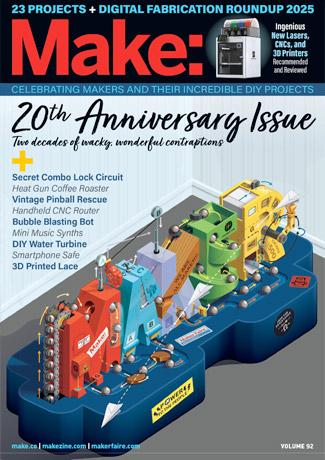Jeremy is an engineer with 10 years experience at his full-time profession, and has a BSME from Clemson University. Outside of work he’s an avid maker and experimenter, building anything that comes into his mind!
View more articles by Jeremy S CookCasting metal generally involves heating the material hot enough to flow into a mold cavity. The shape of this cavity then determines the shape of the part. This is an excellent process if you have the necessary equipment to heat metal to the required temperature, but for the rest of us, it’s not that convenient.
Fortunately, there is an alternative called “cold casting.” This process, as shown by Paul Braddock in the Mold3D video below, involves mixing metal powders with clear resins. This resin-powder combination (iron in this case) is then poured into a mold made out of silicon rubber.
Braddock makes the mold for the robot head by first 3D printing it as normal. A compound called “Pinkysil” is then poured onto it, which sets in around 20 minutes. The printed head is then removed, and then polyester resin and powdered iron are combined in a 1-1 ratio and poured into the mold. Mold release is sprayed on to aid in removal of the head later.
Braddock is quick to note that appropriate personal protective equipment should be used with this process.
After the new semi-metalic head was formed, it was pulled out of the mold after around six hours. It looks pretty good, “a few small air bubbles, but not too bad,” however, it still needs a little work to have the desired effect. Braddock then burnished the surface with steel wool and used a rust catalyst solution to further weather the model.
After this, Braddock burnished the model again with steel wool, and with the back of a spoon. The results look really excellent. Though it’s not fully metallic, this part certainly has that look, and this type of part can even be picked up by a magnet, if that helps your design.
Another Example
For another example of what you can do with the cold casting process, and where I saw this video originally, here’s a “Bearded Yell” model made based on this process.
[via Reddit]
Jeremy is an engineer with 10 years experience at his full-time profession, and has a BSME from Clemson University. Outside of work he’s an avid maker and experimenter, building anything that comes into his mind!
View more articles by Jeremy S CookADVERTISEMENT







